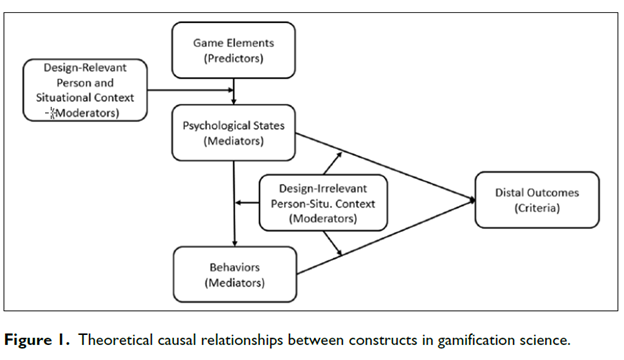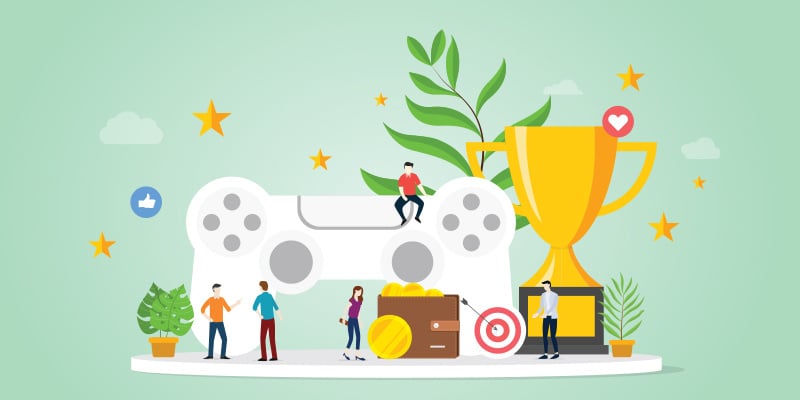
Last week, we wrote about cultural influences and gamification and why segmenting your target audiences helps you avoid running afoul of national and organizational culture and micro-cultures within your organization.
This week, we are exploring the benefits of gamification to businesses. Before we do, we want to show you what it takes to achieve those benefits.
Strategy First
Dozens of gamification companies have sprung up in the past couple of years. Enterprise software vendors are now embedding gamification tools in their platforms. Finding a means to implement online gamification is easy.
However, technology should not be the first consideration. Plug and play gamification without a strategy and careful implementation can produce the same dismal results as the “technology first” HCM and learning projects of the past.
Targeted Outcomes in Gamification
An effective gamification program starts with understanding the change you want to make: it could be things like increased job performance, learning, improved health, or improved leadership.i
Once we have a meaningful purpose, we can design game elements that make everyday business more engaging, more motivating, and more fun. Getting people excited about a goal can spread through your organization, and if you use rewards with only symbolic value, you can scale up quickly without incurring more costs.ii
Psychological and Behavioral Changes as Mediators in Gamification
Psychological states and behaviors are not the purposes of gamification. They are mediators that have a causal effect.iii Our experience tells us that people subjected to gamification with targeted outcomes of psychological and behavioral change will, at some point, feel manipulated. People who understand the goal will understand better why their participation matters. With transparency, you can avoid having your people feel that their employer is trying to change them.

That doesn’t mean you can ignore those personal changes. They are essential to the outcome, as shown by Landers et al.:
- Game elements may have a causal, direct effect on psychological states.
- Psychological states may have a causal, direct effect on behaviors.
- Both psychological states and behaviors may have a causal, direct effect on outcomes.
- Game elements may have a causal, indirect effect on target outcomes via the intermediary causal effects of psychological states on behaviors and behaviors on outcomes.
Intrinsic vs. Extrinsic Rewards in Gamification
Your compensation specialists can show you why extrinsic rewards (cash, points, avoidance of penalties) lose their luster over time. It’s because the participants don’t own the objectives.
An intrinsically motivating activity is one that
- feeds your desire for personal growth by achieving competence,
- allows you to work toward your own goals with some amount of autonomy, and
- contributes to the relationship with a group or a purpose larger than yourself.iv
That doesn’t mean you can’t use extrinsic motivators like badges and quests, but without the accompanying intrinsic motivation, the gamification elements will eventually fail. Badges have no real meaning without attachment to personal achievement.
Benefits of Gamification
Well-designed gamification produces benefits at every level of the organization: individuals, work groups, and the organization itself. If you begin your gamification efforts by establishing the desired outcome, you can achieve improvements in productivity and profitability.
Feedback
One of the most potent mechanisms of gamification is feedback, and many elements can contribute to it. For example:
- Leaderboards can show how an individual is doing relative to a personal benchmark, a work group, or a population.
- Points awarded can show progress toward a goal or benchmark.
- Levels show progress toward mastery.
- Badges and trophies can document the achievement of significant milestones.
- You can attach badges to performance levels in assessments.
Objective Performance Tracking
One of the most challenging things for managers to do is produce unbiased performance evaluations. When you assign values to achievements, you automatically create objective performance data points. Managers can see real measures of performance within a group or population.
Recognition
Gamification lends itself easily to recognition for achievement.
- You can publish results in physical or online bulletin boards and company publications.
- Badges, levels, titles, and other awards can display alongside names in team apps and work platforms.
- Tracking achievements makes it easy to celebrate them at team meetings and company gatherings.
Mastery
The feeling of mastery is a strong force in human psychology. Achieving new levels of performance takes on a much deeper meaning when it is recognized through gamification. Mastery creates confidence, and that can have a big impact on performance.
Achieving Short-Term Goals
Contests and quests can be useful in achieving success in new initiatives, such as adopting new systems, organizational realignment, or new ways of working.
Risk Management, Compliance, and Security
Gamification can remove the tedium of compliance training. If you gamify compliance on the job, you can create a new awareness of threats and security that you cannot achieve by one-way communication.
Keep your Eyes on the Objective
We expect that a lot of businesses will try “plug-and-play” gamification. That approach is not likely to produce a lot of long-lasting benefits.
We urge to prepare carefully and make the business goal transparent to everyone. Design gamification to reward progress toward that goal. See what happens when you align individual achievement with organizational success.
References :
1. Landers, Richard N., Elena M. Auer, Andrew B. Collmus, and Michael B. Armstrong. "Gamification Science, Its History and Future: Definitions and a Research Agenda." Simulation & Gaming 49, no. 3 (2018): 315-37. doi:10.1177/1046878118774385.
2. Cherrie, David. "How Leaders Can Utilize Gamification to Level Up Engagement." Forbes. September 26, 2018.
3. Landers.
4. Stephendale. "Gamification: Making Work Fun, or Making Fun of Work?" The Future of Work. August 10, 2018.
Phenom eCloud is a comprehensive technology solutions provider committed to empowering businesses to overcome challenges, enhance their workforce capabilities, and achieve superior outcome.





Leave a Comment